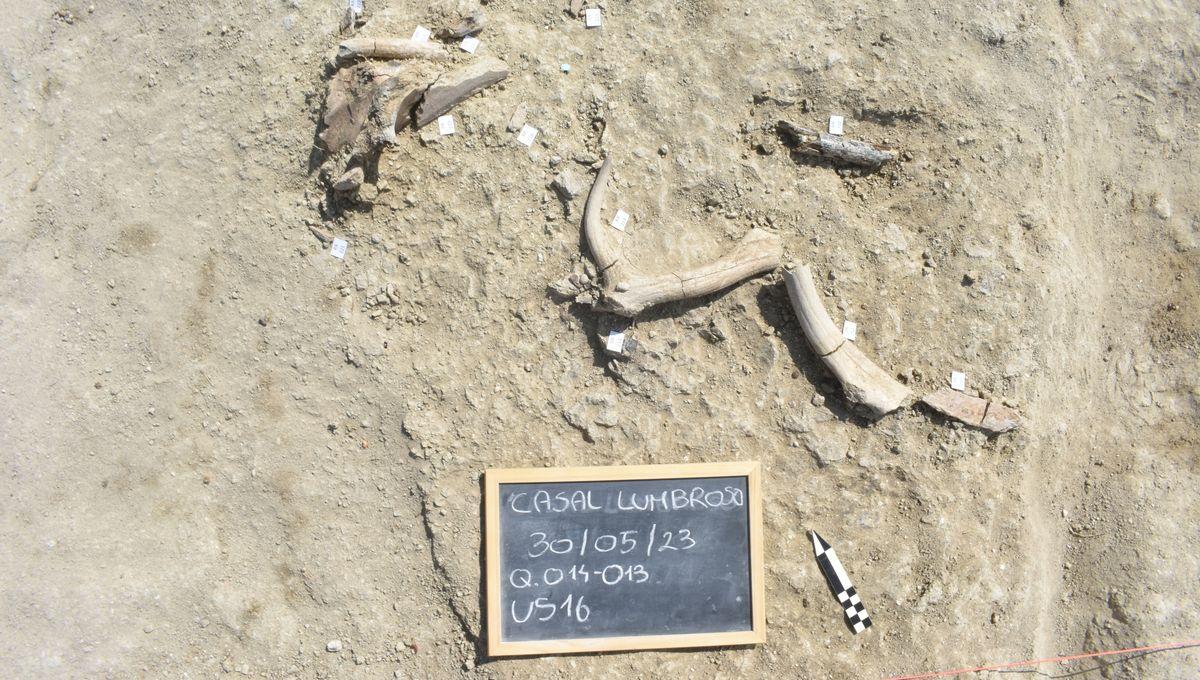-
Fil d’actualités
- EXPLORER
-
Pages
-
Blogs
-
Forums
400,000-Year-Old Fossil Shows Butchering Elephants Helped Early Humans To Supersize Their Tools

400,000-Year-Old Fossil Shows Butchering Elephants Helped Early Humans To Supersize Their Tools
Elephants were on the menu for hominins living in Italy 400,000 years ago, and a rare fossil reveals the tools they used, as well as those they got out of the process.
The rest of this article is behind a paywall. Please sign in or subscribe to access the full content. It’s no secret that our ancestors, and some other branches of the human family tree, liked a big meal. There’s evidence, for example, that Neanderthals hunted Palaeoloxodon antiquus, the straight-tusked elephant, which was much larger than even mammoths or modern elephants. However, they didn’t leave instruction manuals behind, and evidence of the process is patchy at best. That makes the elephant bones discovered in 2017 at Casal Lumbroso, a suburb of Rome, particularly valuable. It’s among the best-preserved examples of an elephant butchery site in Europe. As an added bonus, volcanic ash deposits above and below the bones date the carcass to a 3,000-year gap, around 404,000 years ago. Not only is that unusually precise, but it places the animal’s demise during a warm period between two ice ages in the Middle Pleistocene. More than 300 skeletal remains of a single Palaeoloxodon have been found at Casal Lumbroso, along with more than 500 stone tools, a rare abundance that has been mixed with a smattering of remains of smaller animals. Many of the bones show fracture marks from the processing, often clear enough that paleontologists can learn a lot about the tools applied. The authors of a study of the specimen conclude the elephant was butchered using small stones, as indicated by both the sub-30 millimeter (1.2 inch) flints left behind and the absence of cut marks on bones. These instruments would have been suited to cutting soft tissues. Elephant bones on site at Casal Lumbroso and a sketch of their shapes Mecozzi et al., 2025, PLOS One, CC-BY 4.0 With so much meat on an elephant, it is understandable if early hunters didn’t feel the need to make use of everything, particularly if they lacked the technology for storage. However, that does not mean they ignored everything else. The authors report that a few of the elephant bones had been shaped for use as larger tools. "Our study shows how, 400,000 years ago in the area of Rome, human groups were able to exploit an extraordinary resource like the elephant—not only for food, but also by transforming its bones into tools,” the authors write in a statement. "Reconstructing these events means bringing to life ancient and vanished scenarios, revealing a world where humans, animals, and ecosystems interacted in ways that still surprise and fascinate us today.” The choice of such small stones seems surprising to us, but the authors suspect that larger stones suitable for sharpening may have been in short supply locally. The few larger stone tools are mostly limestone. The authors think it is likely the elephant died of natural causes, such as being caught in a mud trap, rather than being hunted with such tiny weapons, but are open to the possibility that the humans drove it into the mud. The shortage of large stone tools emphasizes how valuable elephant bone tools would have been. The site was then part of the delta of the Tiber River, one of the best sources of mammal remains in Europe from that time. Plant and other animal remains indicate the site was wooded in the humid climate of the day. Homo sapiens had not evolved by this time, let alone left Africa, and the oldest confirmed Neanderthals were considerably younger than this, so the tool wielders were most likely Homo heidelbergensis or Homo erectus. The study is published in PLOS One.


